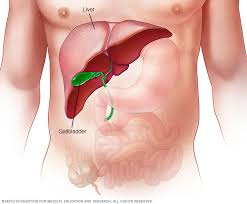You might have fatty liver disease and not realize it. There are often no symptoms at first. As time goes on, often years or even decades, you can get problems like:-
Feeling tired
Loss of weight or appetite
Weakness
Nausea
Confusion, poor judgment, or trouble concentrating
You might have some other symptoms, too. Your liver may get larger. You could have a pain in the center or right upper part of your belly. And the skin on your neck or under your arms may have dark, colored patches.
If you have alcoholic liver disease, you may notice that the symptoms get worse after a period of heavy drinking.
You could also get cirrhosis, a scarring of your liver. When that happens, you might have:-
Buildup of fluid in your body
Wasting of your muscles
Bleeding inside your body
Jaundice (yellowing of skin and eyes)
Liver failure



 Contact Us
Contact Us






 Hospitals
Hospitals
 Doctors
Doctors
 Diagnostic
Diagnostic
 Pharmacy
Pharmacy
 Health Tips
Health Tips
 Blog
Blog

























Comments